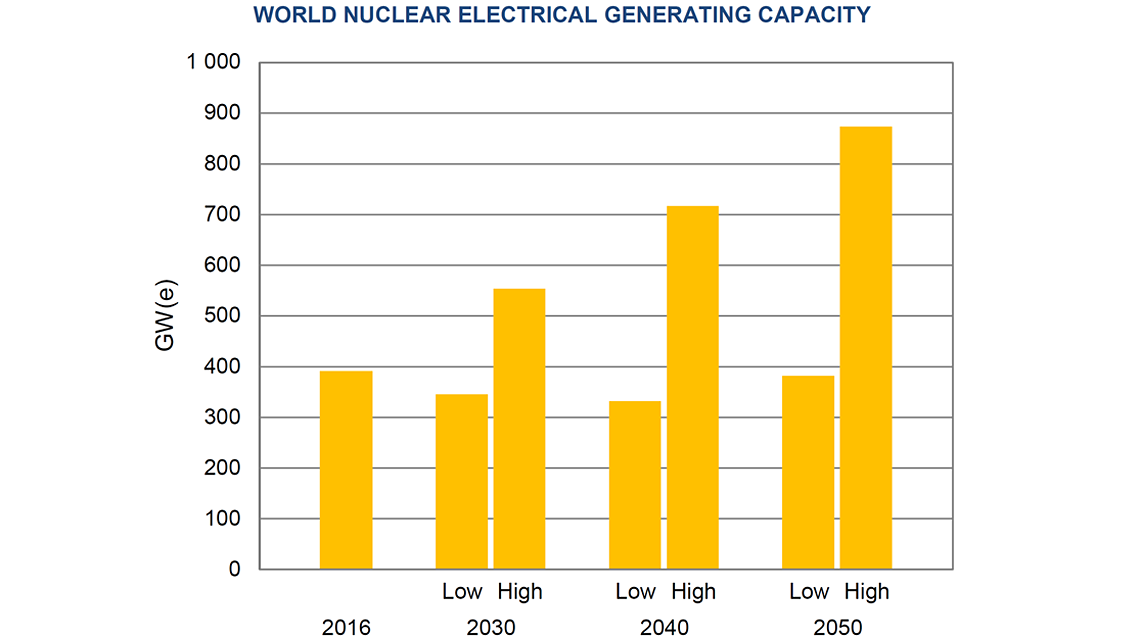The IAEA’s annual publication on energy and electricity projections show that nuclear power’s global potential up to 2050 remains high, although its expansion is expected to slow in coming years.
The newly released 37th edition of Energy, Electricity and Nuclear Power Estimates for the Period up to 2050 (Reference Data Series No. 1 (RDS-1)) documents these trends in detail by region. Projections are presented as low and high estimates, reflecting different driving factors that have an impact on nuclear power deployment.
Interest in nuclear power remains particularly strong in the developing world, the publication highlights. However, compared with the 2016 projections for 2030, the 2017 projections were reduced by 45 GW(e)[1] by 2030 in both high and low cases.
Over the short term, the low price of natural gas, the impact of renewable energy sources on electricity prices, and national nuclear policies in several countries following the accident at Fukushima Daiichi Nuclear Power Plant in 2011 are expected to affect nuclear growth prospects. Yet, commitments agreed to at the 21st session of the United Nations Climate Change Conference (COP21) could have a positive impact on nuclear energy development in the future.
The high projections indicate an increase from 2016 levels by 42% in 2030, by 83% in 2040 and by 123% in 2050. The low projections, on the other hand, indicate a decline in capacity by 12% in 2030 and 15% in 2040, before rebounding to present levels by 2050.
The wide range in these projections is also due to the considerable number of reactors scheduled to be retired around 2030 and beyond, particularly in North America and Europe, and whether new nuclear capacity would be built to replace these retirements.
The leading influential factors that might affect the future of nuclear power are discussed in detail in the recent IAEA report on International Status and Prospects for Nuclear Power 2017.

